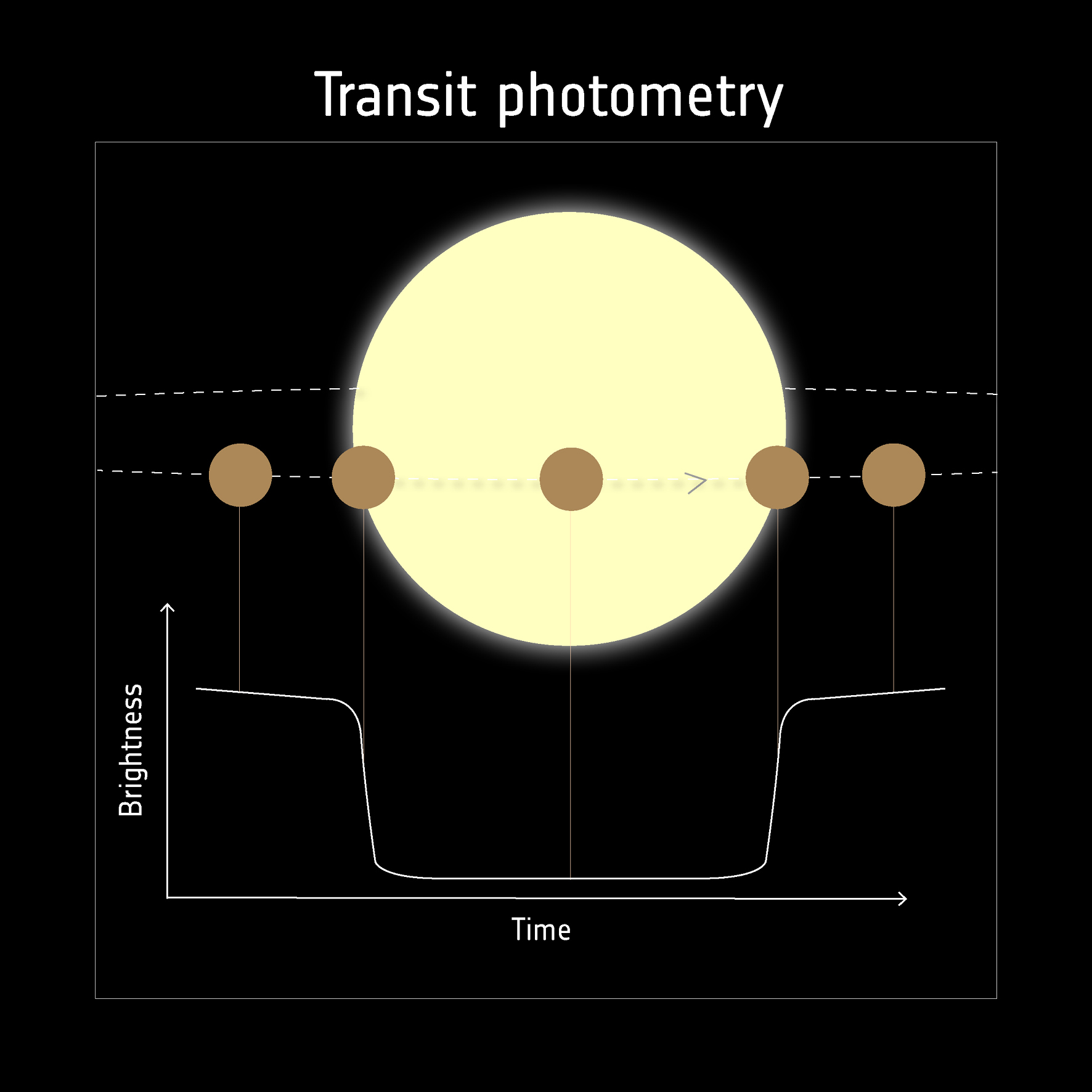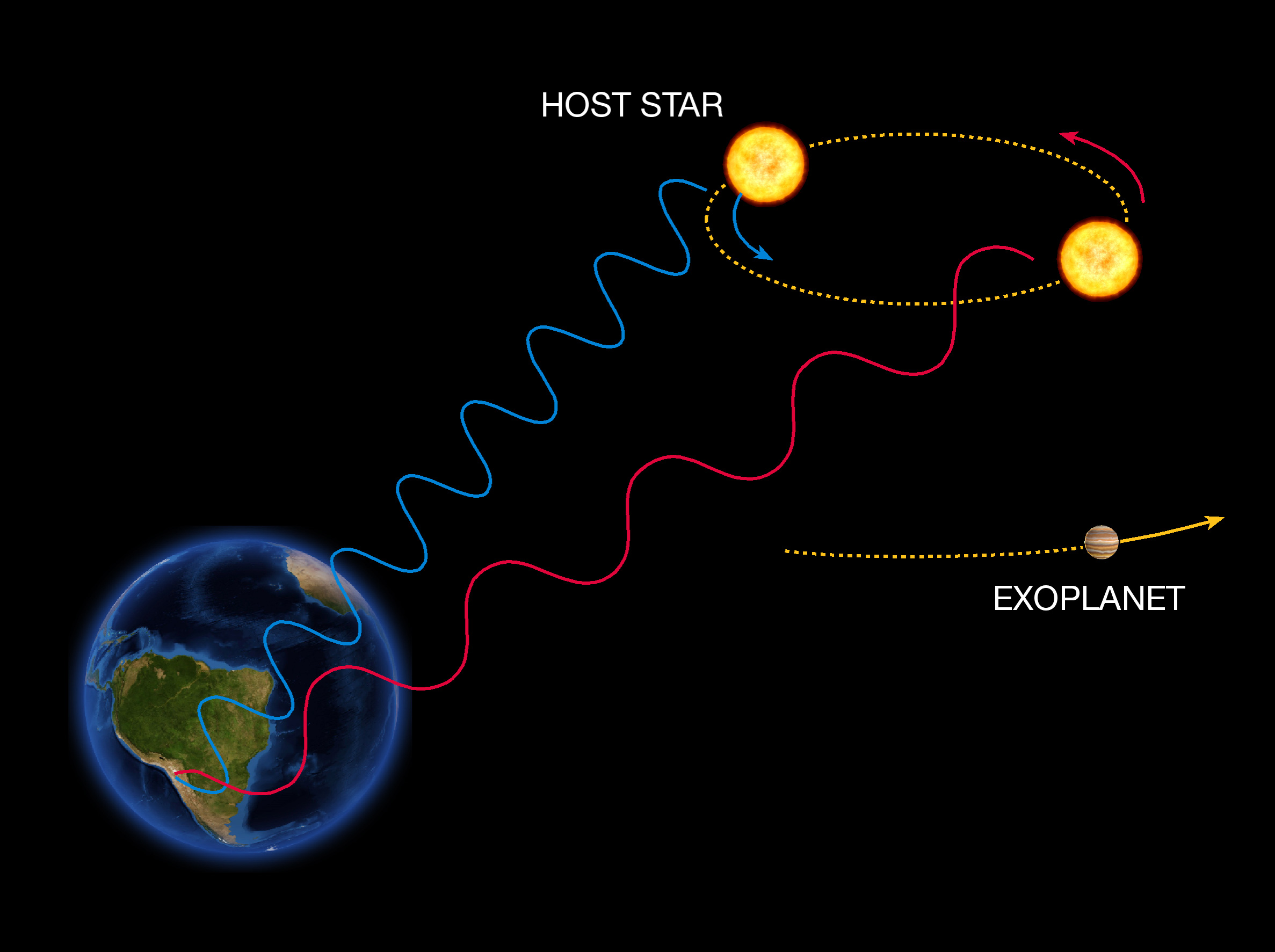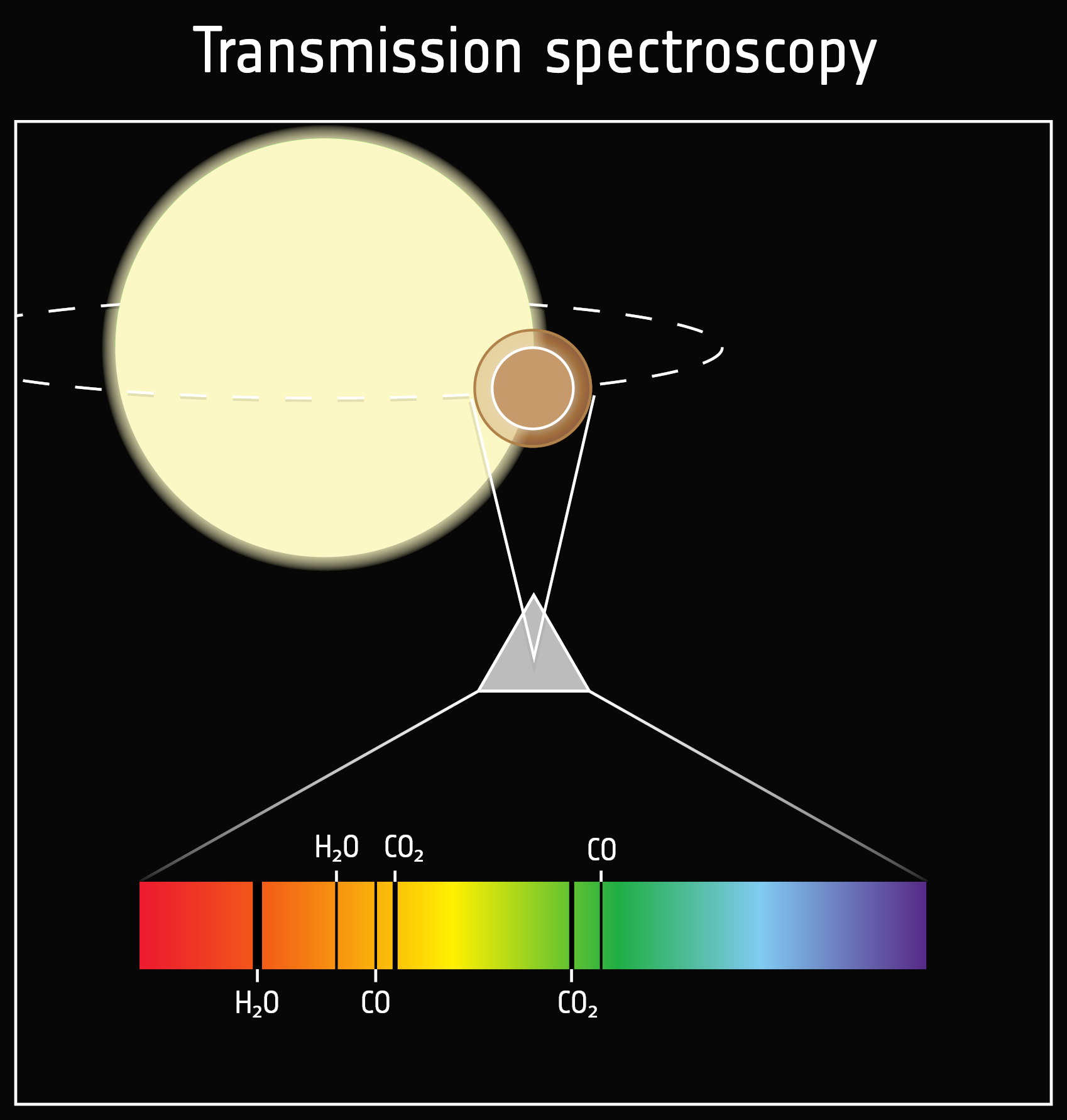Science
Exoplanet science, the study of planets orbiting around other stars, gives us clues as to how planets form, the position of our own Solar System in the vast parameter space of possible planets, and how prevalent habitable worlds may be in our Galaxy. They may also provide us with clues as to the Earth’s past and possible future and understanding on how unique our planet is. These are pivotal issues to scientists and society as a whole and help us better understand the world we live in.
The goal of EXOWORLD is to develop innovative planet characterisation techniques to understand the evolution of planetary systems and explore what makes a habitable world.
The project will focus on several broad aspects of exoplanet research:
Some of the exoplanet planet detection and characterisation methods that we make use of are -
Transit
A transit occurs when a planet orbits its host star across the line of sight of the observer. During a transit, the planet blocks the light from the star which makes it appear dimmer. The transit photometry measures the change in stellar brightness when a transit occurs. In the presence of a planet, the star’s light curve will show a characteristic “dip” periodically.
 Credit: European Space Agency
Credit: European Space Agency
Radial velocity
In a planetary system, the host star “wobbles” about the center of mass or changes its velocity because it experiences gravitational pull from the planet. The spectrum of the star is blueshifted when the star moves towards us. When the star moves away from us, its spectrum redshifted. The radial velocity methods monitors the spectrum of the host star and searches for velocity changes due to the presence of a planet.
 Credit: European Southern Observatory
Credit: European Southern Observatory
Transit spectroscopy
 Credit: European Space Agency
Credit: European Space Agency